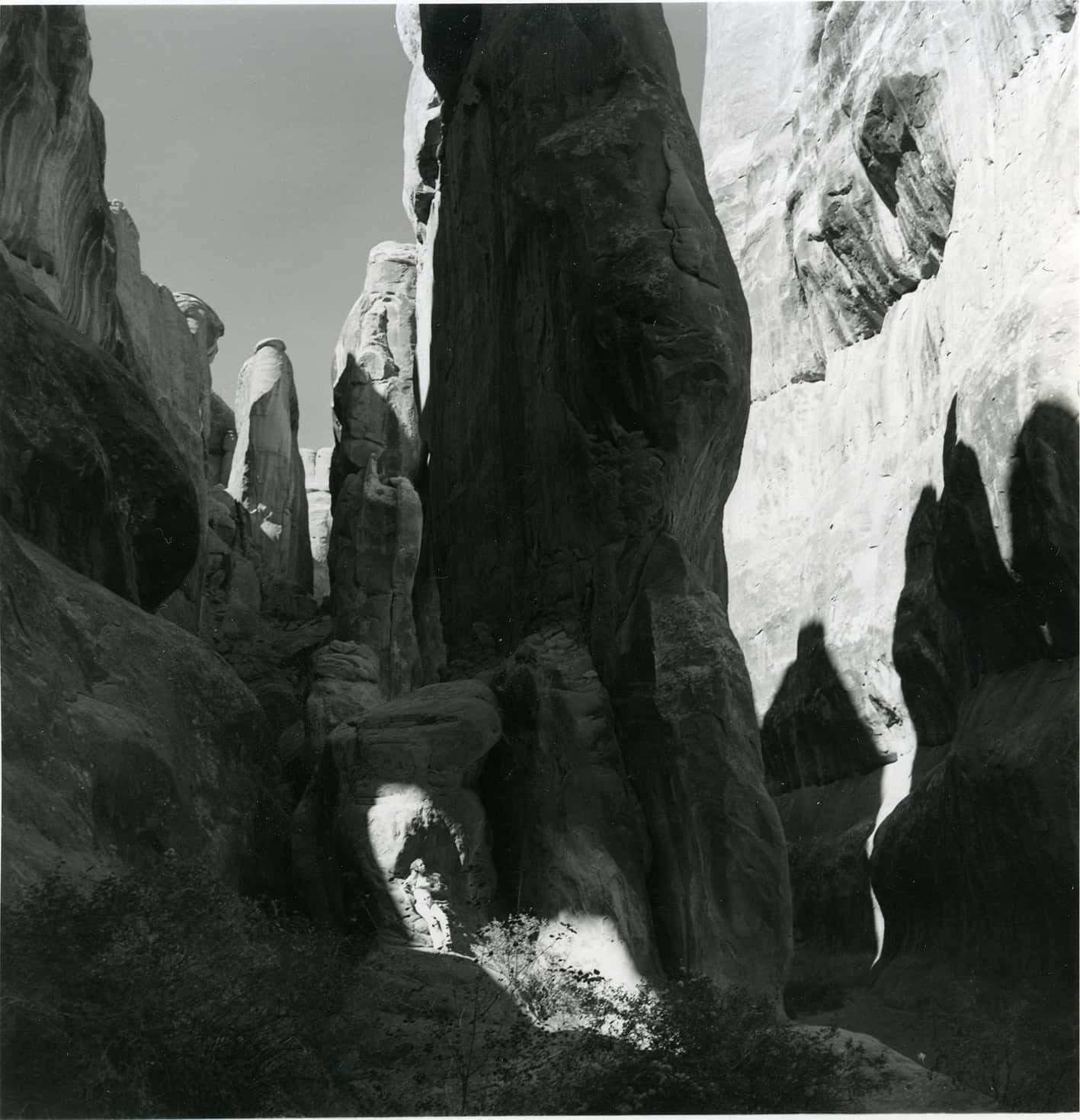Some information may be outdated.

This November marks the 52nd anniversary of Arches National Park’s establishment and federal recognition. On November 12, 1971, President Richard Nixon changed the status of then Arches National Monument via Public Law 92-155 to a national park, thus recognizing, memorializing and conserving over 10,000 years of human history that has existed in the weather-shaped sandstone landscape.
The area the national park now occupies has a long history of federal protection, beginning as a national monument in 1929, which contained only two small sections of land: 2,600 acres known as “Devil’s Garden” and 1,600 acres called “Windows.” The proclamation which initially established the land as a national monument reads, “These areas contain extraordinary examples of wind erosion in the shape of gigantic arches, natural bridges, ‘windows,’ spires, balanced rocks, and other unique wind-worn sandstone formations, the preservation of which is desirable because of their educational and scenic value. It appears that the public interest would be promoted by reserving these features as a national monument, together with such land as may be needed for the protection thereof.”


Presidents Franklin D. Roosevelt and Dwight D. Eisenhower enlarged the monument in 1938 and 1960 respectively, before the park reached its latest land area in 1971.
Maxine Newell, who started working at the then-monument in 1968, shared a personal account of her time there through an interview conducted by Amy Korpieski on July 1, 1991. The oral history is now held in Arches National Park Archive.
Newell remembers being one of just three staff members who would take on necessary tasks as they came up.
“I went by a few different titles,” she recalls in the interview. “I ended up a Park Technician. I did the secretarial work and took care of the desk and did some interpretive writing. I did the museum and the library, and the historic files and it was all just interlocked.”

When Newell worked at Arches, the entrance fee was only a dollar. Locals brought out-of-town visitors to appreciate its natural beauty: Newell said the area “was the second living room for Moab when company would come. It always included the trip out to Arches.”
Newell said she was always proud to be part of the National Park Service. She watched the monument become a national park and saw visitation increase dramatically over the years.
“Before I worked for the Park I worked for the local newspaper for six years,” she said, “and I remember going out there one time and they were celebrating their first 100,000th visitor of all times, during the whole era of the Park. And, of course, now they have more than that in one year. So the Park just grew, but it never stopped being a pleasure.”
This and many other oral histories, which paint vivid pictures of times long gone, can be found in the Moab Museum’s Oral History Collection.
The Moab Museum is dedicated to sharing stories of the natural and human history of the Moab area. To explore more of Moab’s stories and artifacts, find out about upcoming programs, and become a Member, visit www.moabmuseum.org.
Appreciate the coverage? Help keep local news alive.
Chip in to support the Moab Sun News.





